Entry Database : PDB / ID : 2mgtTitle Zinc induced dimer of the metal binding domain 1-16 of human amyloid beta-peptide with Alzheimer's disease pathogenic English mutation H6R Amyloid beta A4 protein Keywords / / / / Function / homology Function Domain/homology Component
/ / / / / / / / / / / / / / / / / / / / / / / / / / / / / / / / / / / / / / / / / / / / / / / / / / / / / / / / / / / / / / / / / / / / / / / / / / / / / / / / / / / / / / / / / / / / / / / / / / / / / / / / / / / / / / / / / / / / / / / / / / / / / / / / / / / / / / / / / / / / / / / / / / / Biological species Homo sapiens (human)Method / Model details closest to the average, model1 Authors Polshakov, V. / Istrate, A. / Kozin, S. History Deposition Nov 6, 2013 Deposition site / Processing site Revision 1.0 Nov 12, 2014 Provider / Type Revision 1.1 Mar 2, 2016 Group Revision 1.2 Jan 1, 2020 Group / Database references / Derived calculationsCategory citation / pdbx_nmr_software ... citation / pdbx_nmr_software / pdbx_nmr_spectrometer / struct_conn / struct_ref_seq_dif Item _citation.journal_abbrev / _citation.journal_volume ... _citation.journal_abbrev / _citation.journal_volume / _citation.page_first / _citation.page_last / _citation.pdbx_database_id_PubMed / _citation.title / _pdbx_nmr_software.name / _pdbx_nmr_spectrometer.model / _struct_conn.pdbx_leaving_atom_flag / _struct_ref_seq_dif.details Revision 1.3 Oct 30, 2024 Group Data collection / Database references ... Data collection / Database references / Derived calculations / Structure summary Category chem_comp_atom / chem_comp_bond ... chem_comp_atom / chem_comp_bond / database_2 / pdbx_entry_details / pdbx_modification_feature / pdbx_struct_conn_angle / struct_conn / struct_site Item _database_2.pdbx_DOI / _database_2.pdbx_database_accession ... _database_2.pdbx_DOI / _database_2.pdbx_database_accession / _pdbx_struct_conn_angle.ptnr1_auth_asym_id / _pdbx_struct_conn_angle.ptnr1_auth_comp_id / _pdbx_struct_conn_angle.ptnr1_auth_seq_id / _pdbx_struct_conn_angle.ptnr1_label_asym_id / _pdbx_struct_conn_angle.ptnr1_label_atom_id / _pdbx_struct_conn_angle.ptnr1_label_comp_id / _pdbx_struct_conn_angle.ptnr1_label_seq_id / _pdbx_struct_conn_angle.ptnr3_auth_asym_id / _pdbx_struct_conn_angle.ptnr3_auth_comp_id / _pdbx_struct_conn_angle.ptnr3_auth_seq_id / _pdbx_struct_conn_angle.ptnr3_label_asym_id / _pdbx_struct_conn_angle.ptnr3_label_atom_id / _pdbx_struct_conn_angle.ptnr3_label_comp_id / _pdbx_struct_conn_angle.ptnr3_label_seq_id / _pdbx_struct_conn_angle.value / _struct_conn.pdbx_dist_value / _struct_conn.ptnr1_auth_asym_id / _struct_conn.ptnr1_auth_comp_id / _struct_conn.ptnr1_auth_seq_id / _struct_conn.ptnr1_label_asym_id / _struct_conn.ptnr1_label_atom_id / _struct_conn.ptnr1_label_comp_id / _struct_conn.ptnr1_label_seq_id / _struct_conn.ptnr2_auth_asym_id / _struct_conn.ptnr2_auth_comp_id / _struct_conn.ptnr2_auth_seq_id / _struct_conn.ptnr2_label_asym_id / _struct_conn.ptnr2_label_atom_id / _struct_conn.ptnr2_label_comp_id / _struct_conn.ptnr2_label_seq_id / _struct_site.pdbx_auth_asym_id / _struct_site.pdbx_auth_comp_id / _struct_site.pdbx_auth_seq_id
Show all Show less
 Yorodumi
Yorodumi Open data
Open data Basic information
Basic information Components
Components Keywords
Keywords Function and homology information
Function and homology information Homo sapiens (human)
Homo sapiens (human) Authors
Authors Citation
Citation Journal: Sci Rep / Year: 2016
Journal: Sci Rep / Year: 2016 Structure visualization
Structure visualization Molmil
Molmil Jmol/JSmol
Jmol/JSmol Downloads & links
Downloads & links Download
Download 2mgt.cif.gz
2mgt.cif.gz PDBx/mmCIF format
PDBx/mmCIF format pdb2mgt.ent.gz
pdb2mgt.ent.gz PDB format
PDB format 2mgt.json.gz
2mgt.json.gz PDBx/mmJSON format
PDBx/mmJSON format Other downloads
Other downloads 2mgt_validation.pdf.gz
2mgt_validation.pdf.gz wwPDB validaton report
wwPDB validaton report 2mgt_full_validation.pdf.gz
2mgt_full_validation.pdf.gz 2mgt_validation.xml.gz
2mgt_validation.xml.gz 2mgt_validation.cif.gz
2mgt_validation.cif.gz https://data.pdbj.org/pub/pdb/validation_reports/mg/2mgt
https://data.pdbj.org/pub/pdb/validation_reports/mg/2mgt ftp://data.pdbj.org/pub/pdb/validation_reports/mg/2mgt
ftp://data.pdbj.org/pub/pdb/validation_reports/mg/2mgt Links
Links Assembly
Assembly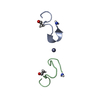
 Components
Components Homo sapiens (human) / References: UniProt: P05067
Homo sapiens (human) / References: UniProt: P05067 Sample preparation
Sample preparation Processing
Processing Movie
Movie Controller
Controller


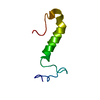
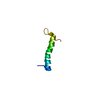
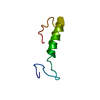
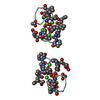
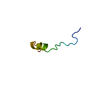
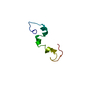
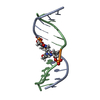
 PDBj
PDBj
















 HSQC
HSQC